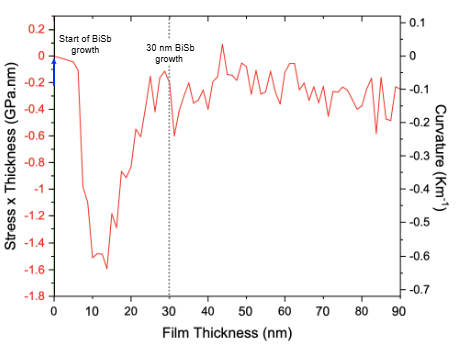Structural and Electrical Characterizations of BiSb Topological Insulator Layers Epitaxially Integrated on GaAs (2022)

Crystal Growth & Design - 2022 - D.Sadek
Topological insulators (TIs) are known as promising materials for new nanoelectronics and spintronics applications thanks to their unique physical properties. Among these TIs, bismuth antimony alloys (Bi1–xSbx) remain the most interesting because their electronic band structure can be controlled by changing the stoichiometry, the thickness, or the temperature. However, integrating these materials on an industrial substrate remains a challenge. Here, we investigate the growth, structural, and electrical properties of BiSb materials epitaxially deposited on industrial GaAs(001) substrates. We report the influence of key growth parameters such as temperature, antimony composition, thickness, and growth rate on the crystal quality. We manage to optimize the growth conditions while keeping the Bi1–xSbx composition within the TI range. Despite the large lattice mismatch and different crystalline matrices between the deposited material and the substrate, we successfully grow high-quality BiSb(0001) films. For optimized growth conditions, n-type semiconductor behavior of the BiSb layer is demonstrated at temperatures above 100 K. The material band gap calculated from our transport measurements corresponds to that mentioned in the literature. A change of the carrier type from bulk electrons to surface holes is observed when decreasing the temperature below 55 K. Hole mobilities up to 7620 cm2/(V·s) are extracted. This is, to our knowledge, the first demonstration of TI integrated on an industrial substrate keeping its protected surface states.

